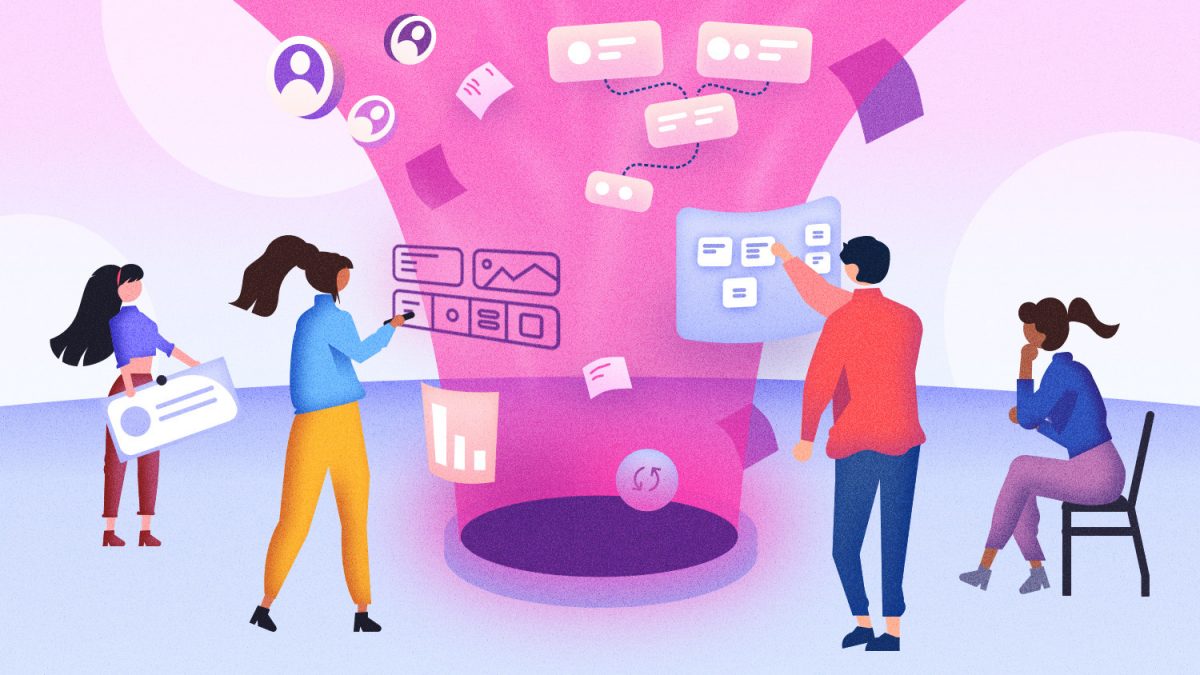- What is Discovery?
- Why do a Discovery phase?
- What happens during a Discovery phase?
- What are the outputs of Discovery?
What is Discovery?
The Product Discovery phase is the first step in the development process of any mobile app, web app or bespoke software.
Designing any non-trivial Digital Product inherently comes with a lot of unknowns and initially more questions than there are answers. Discovery provides a process to take you from a concept or high level brief to a deliverable piece of technology.
Fundamentally, Discovery is about framing (or re-framing) the problem you’re trying to solve and validating your proposed solution before spending money on design and development. It is concerned with what you plan to develop and how it will work.

Rareloop's Design Thinking and approach to problem solving is streaks ahead of the competition.
Guy Wilcox

Why do a Discovery phase?
A Discovery phase aims to reduce the primary risks associated with Digital Product development. Marty Cagan of the Silicon Valley Product Group defines these risks in his book Inspired as:
- value risk (will customers/users buy it/choose to use it?)
- usability risk (will users be able to figure out how to use it?)
- feasibility risk (can this be built with the time, budget and technology available?)
- business viability risk (does this meet the aims of the business?)
Essentially, Product Discovery reduces the risk of wasting time, money and energy on building the wrong thing.
What happens during a Discovery phase?
Discovery follows a two stage process, defined by the Design Council as the Double Diamond. The two stages are:
- The problem framing stage
- The solution stage
Both stages contain a period of expansive (divergent) work where more is understood or ideas are created. These are then followed by a period of refining (convergent) work, where decisions are made and ideas are validated.

The exact activities undertaken during Discovery will vary from product to product but typically include:
Framing stage
- Defining product vision and purpose
- Persona development (who will use/interact with the product/system?)
- Stakeholder interview
- User journeys/workflows
- Data mapping
- Technical exploration and audit
Solution stage
- Wireframing
- Interactive prototypes
- System architecture planning
- User testing and feedback

One of the benefits of working with Rareloop is how they listen to our instructions but challenge our thinking in a constructive and positive manner. They don’t just deliver what we think we want, but combine our requirements and ideas with their creativity and technical expertise. We have found that this leads to better outcomes that often exceed our initial expectations.
Mike Craft

What are the outputs of Discovery?
At the end of Discovery you will have everything you need to begin the design and build phase of your development project. You’ll have been involved with the definition and solution and worked to prioritise features around your available time and budget.
Typical outputs of Discovery include:
- An interactive prototype – this can be used to demonstrate value to other stakeholders or potential investors
- A definition of the scope for the first phase of development
- A backlog of tasks and features that are to be tackled in a future development phase
- A refined budget and timeline for product development




